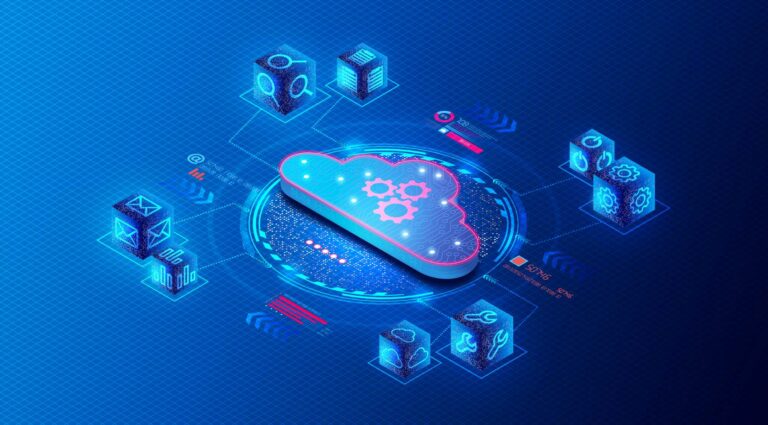The NHS is operating in one of the most challenging landscapes since its genesis.
Diseases are rising in complexity and demand continues to soar following the pandemic.
What’s more, the growing population is living longer. Hospitals need to be prepared for a 40% increase in demand by 2035 and the IFS has predicted spending on healthcare will need to increase by 3.3% a year over the next 15 years to keep up.
It’s not all doom and gloom; the healthcare system is still composed of the best and the brightest doctors and administrators. But in order for the experts to work to their full potential, they need to be supported by the most innovative and practical technologies.
Businesses across sectors are automating their practices with AI. And in healthcare, it’s already making waves in diagnostics and contributing to life-saving medical advancements. But it’s also used across the sector in another way.
The transformer architecture which powers widely used Large Language Models (LLMs). Transformer architecture is unique in that it can be used to understand and create text, image and audio content.
However, this kind of Generative AI model could be used for much more. Acting as a copilot, AI agents optimised per problem area can help doctors and nurses care for a number of patients at once, requiring fewer resources and supporting better patient outcomes.
Solving the communication question.
According to a report by the Patients Association, more than half (55%) of people have experienced poor communication from the NHS in the past five years. One in ten say their care has been affected as a result.
These communication problems come from a number of factors – from physical letters being sent to the wrong address or getting lost in the post, to patients struggling to get through to their GP or clinician on the phone. No wonder patients feel their care is behind a barrier.
LLMs deployed in the NHS can summarise, categorise, transcribe, translate and interpret voice notes. When a patient sends a message, these tools will help bring relevant information to attention for staff so they don’t have to change systems and sift through screen after screen to find the right appointment. Simple queries (the most common for booking teams is “have you got my referral?”) can be replied to automatically – through both text and voice. This will lighten the pressure on stretched booking teams and improve patient experience by allowing more time for complex calls with those who need it. When the healthcare system leans into digital communication, productivity will soar and patients will feel better supported.
Analysis of electronic patient records.
Transformer-based LLMs are adapting quickly to the amount of medical information the NHS deals with per patient and on a daily basis. The size of the ‘context windows’, or input, is expanding to accommodate larger patient files, critical for quick analysis of medical notes and more efficient decision making by clinical teams.
Beyond speed, these models serve well for quality of output, which can lead to more optimal patient care. An ‘attention mechanism’ learns how different inputs relate to each other. In a medical context, this can include the interactions of different drugs in a patient’s record. It can find relationships between medicines and certain allergies, predicting the outcome of this interaction on the patient’s health. As more patient records become electronic, the larger training sets will allow LLMs to become more accurate. These AI models can do what takes humans hours of manual effort – sifting through patient notes, interpreting medical records and family history and understanding relationships between previous conditions and treatments.
The benefit of having this system in place is that it creates a full, contextual picture of a patient that helps clinical teams make quick decisions about treatment and counsel. However, it can also go as far as suggesting responses and next steps.
Stringing it all together
There are two paths down which LLMs might evolve. The generalist approach is to create a highly capable model that can understand text, image, voice and has ability to complete a broad range of tasks (think the big name consumer facing LLMs). These may be composed of multiple models within them, often for cost and efficiency purposes, but its goal is to be used for as many tasks as possible. The other approach is to have highly specialised models that excel at a particular function and are stringed together by another LLM. In healthcare the specialist models will prove valuable as they can be fine-tuned on medical data sets and are easier to regulate and approve as medical devices.
LLMs can now understand our intent. This is turning them into more human-like assistants, giving them the power of reasoning and ‘chain-of-thoughts’. This method of breaking down a problem in to sub tasks is well suited to healthcare problems when it is equipped with specialist models that can understand health records, APIs for booking appointments or patient messaging, and integration with existing medical software to interact with clinicians.
This will, in the near future, lead to LLMs managing referrals, ordering diagnostics, waiting for results and gathering the available information to present to a doctor with a set of the next logical steps. On approval, they will coordinate and arrange further bookings, all the while keeping the patient informed, making it an all-round clinical assistant.
Maintain trust and transparency.
Traditional AI models can predict sequences and categorise pieces of data, but success is measured on how often they’re correct. Transformer-based LLMs work by predicting an outcome, which of course, can be wrong. In order for the technology to be economically and legally scalable, it needs to have a much lower error rate than that of humans. This is particularly true in in healthcare – and it’s important to remember not all decisions hold equal risk.
AI models are progressing at a blistering pace and many industries are new to the widespread use of AI. Trained nurses and doctors are aware of the need to challenge AI analysis. This applies to existing diagnostics models, as well as the new generation of LLMs. They’ll have a much easier time assessing the AI model’s interpretation of the issue with more time on their hands and data-backed confidence, all of which an AI copilot can grant them.
The priority across the NHS should be deploying transparent AI models armed by vast amounts of patient data. It’s true that LLMs are only as good as the data behind them. But, once trained, they have the power to change healthcare as we know it. As more healthcare systems engage with this technology we’ll see a steep curve of benefits realised.
About the Author
Perran Pengelly is Co-Founder & CTO at DrDoctor. At DrDoctor we’re building the future of outpatient care. DrDoctor is a patient engagement platform that helps the NHS activate patients in their care and increase capacity through waitlist validation and remote management. Our mission is to improve efficiency in healthcare, and ultimately enable the NHS to break the enormous backlog of patients needing care. How do we do this? We are innovators. Our cloud-based patient management tools automate and virtualise processes and care, so that Doctors can focus on their patients, and that patients can engage as true partners in their care.


